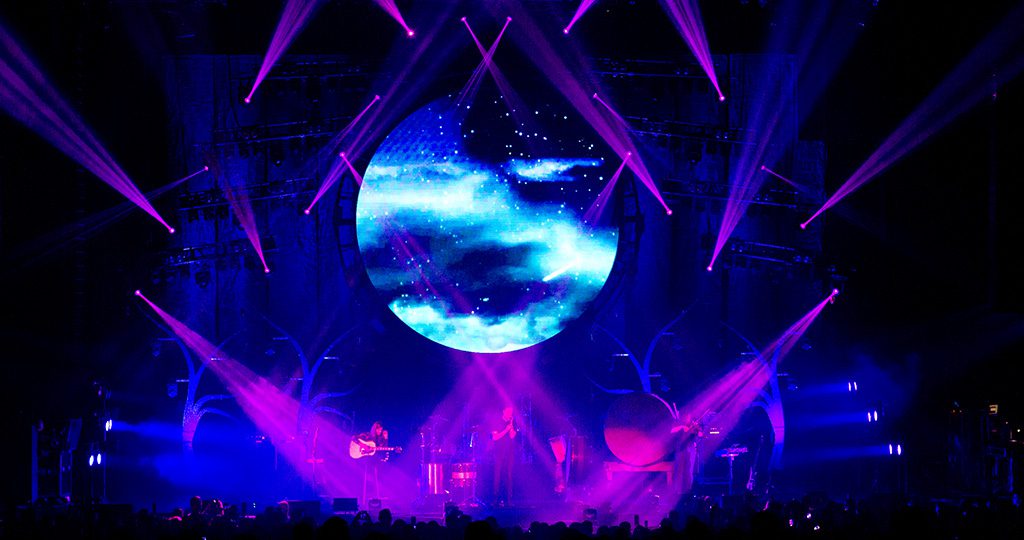Nook Schoenfeld: Unique Light
Posted on November 6, 2018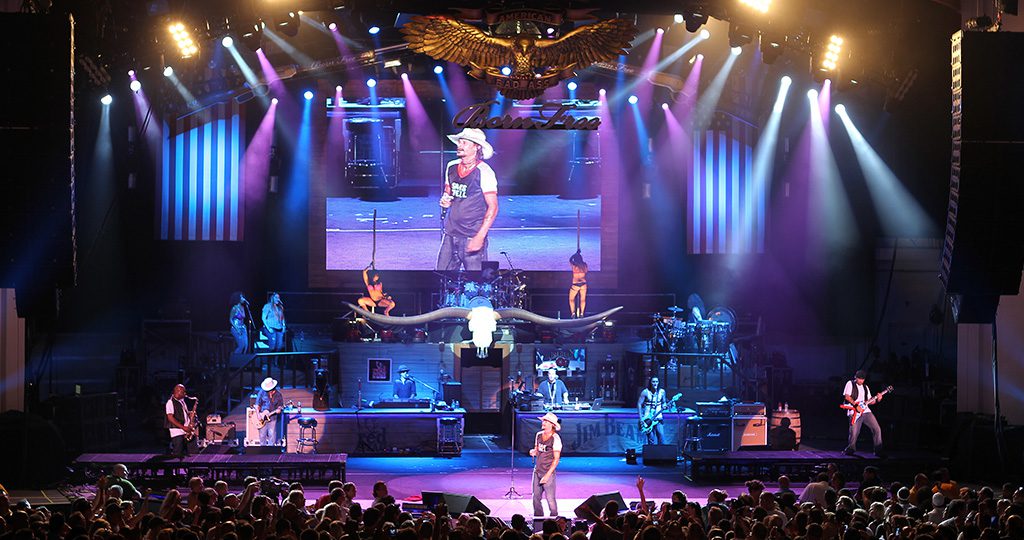
Photo: Todd Kaplan
How did Richard “Nook” Schoenfeld get his trademark nickname? The answer remains shrouded in mystery, even after our extensive interview with the Parnelli Award winning designer. Without sharing too many details, though, he did allow that growing up he had two friends named Richard, and not wanting to “be like anyone else,” he adopted his distinctive moniker.
Schoenfeld has continued to set his own path ever since. While many designers like to start off a show slowly and build to a crescendo, he prefers, in his own inimitable fashion, to come out of the gate fast, intense looks blazing away to capture the audience’s attention, before hitting them with new tricks later on. It’s a formula he has worked to perfection over the years as a designer for long-time client Kid Rock as well as a diverse range of other artists, including Lenny Kravitz, John Legend, Sheryl Crow and the Eagles.
Not surprisingly, given his penchant for following his own instincts, Schoenfeld’s work has also been characterized by the novel twists he puts on familiar scenic elements like kabuki panels, hitting them with unique projections or unusually angled light to give them a new look. He shares this independent-thinking philosophy with young designers, urging them to avoid getting locked into thinking they need the most expensive or the largest number of fixtures. Perhaps arranging fixtures in a different way can achieve the same impact, he tells them, which in the end is what really matters.
The native New Yorker’s portfolio also sets him apart, since it includes “writer/editor” in addition to “lighting designer/director.” As editor of PLSN magazine, he offers a unique perspective on issues by drawing on his exhaustive knowledge of the industry’s history. It’s a history he has often been a part of — and one he continues to help write today, both on the pages of a magazine and on the touring stage. Speaking to us from his office in Minneapolis, Schoenfeld shared his insights into charting your own course in lighting.
You often like to start a show in darkness as you did for Kid Rock recently at Little Caesar’s arena in Detroit and then come out with a big burst of light. At other shows, we’ve seen you silhouette the artist at the start of a show before a big ballyhoo moment. What’s your feeling about dramatic openings?
“I personally like theatrical openings to shows. They can start with a gag or a big hit song with nice FX. However, I do not subscribe to the theory that concerts should start off small, lighting wise – then work into bigger looks as the show progresses. I have seen that work well at times. But I much prefer to hit the audience with the wow factor in the first song, then keep the momentum going. When I was a kid I saw a lot of shows. You always talked about the first song and the encores afterwards. Hit ‘em in the face right from the get-go and they will remember how you started it off.”
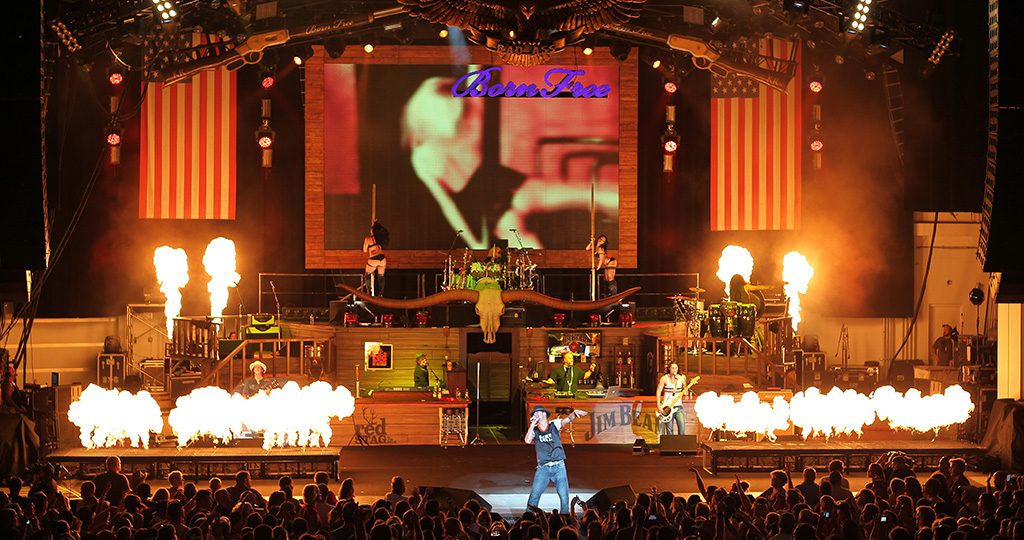
Photo: Todd Kaplan
In the past, you’ve said a good designer knows how to give an “old trick” a new look. Can you elaborate on that?
“There are a lot of things one picks up from theater over the years. Whether it’s ways to use kabuki mechanisms, rigging items to fly in and out correctly, or projecting on materials. When I need an idea, I often will search my mind for how to take traditional theater gags and apply them to today’s technology. Japanese Shoji panels have been around for hundreds of years. But when you put them on a sliding track and feature the panels on a stage, then project on them, you have a new concept devised from an old trick.”
We’ve also heard you advise young designers on how to get big looks for clients that may have limited budgets. How can a designer with a smaller band get more bang for the buck?
“If you are working with a smaller band, chances are you aren’t playing large venues. So, you can pack small fixtures like Rogue pancake lights all over the stage for an affordable price. Everyone would love to have a $70k per week budget for their light system. But some acts just do not wish to spend anywhere near that. Yet they want to be able to make the show look big.
“I have this theory about that. Truss is cheap, lighting fixtures not so much. I can take 50 light fixtures and spread them out over a lot of stage space. I may space the lights 10’ apart from each other. I may have torm racks full of lights – but I place them 6’ apart or so. Put floor lights at different heights in the set. Then when you turn everything on for a big look, it looks massive, because it fills a lot of real estate, not because you have a lot of toys.”
Your association with Kid Rock is one of the most well-known in the industry. How did it start?
“When I was young, I paid attention to bands who just had their first hit single. I was able to approach them, whether through friends with the management company, or as opening acts on a tour I was lighting, and show them some ideas. Lots of these bands had little money when I first started with them.
“Kid Rock had just had his first megahit and was on his way to going platinum. I was programming some lights for an MTV award show. He was on the bill and walked out front to see what it was going to look like when he played. I showed him and he liked it. As it turns out, he was playing another festival gig with the Foo Fighters that I was working on in two weeks time. I preprogrammed a butt load of cues in advance, creating a tight cue list for every song on his hit album.
“When Kid came in for his sound check the next week, I ran the light cues while his band played sound check. I nailed it. He walked out to FOH that day with his road manager (who I knew) and said hi again. He asked me to show him some stuff, so I popped a CD in and rode some faders. He asked if I designed and programmed all of this. I informed him I did. I was intrigued with the performance I saw him do last week and wanted to show him what I could do with his whole set.
“Now the light rig consisted of various geometrical shapes of truss, with light fixtures hanging all over them in weird places. Not a touring system at all, but built for a one-off. I had even promised Red Gibson, the crew chief, that I would never design something like this and make him tour with it.
“Kid said he was tired of walking into venues and seeing three straight trusses flying. He asked if I could have all of this hanging in Saginaw, Michigan the following Friday for a three-month tour? And how much would it cost. I gave him a price, I got paid and the next week Red was in Saginaw hanging this rig!”
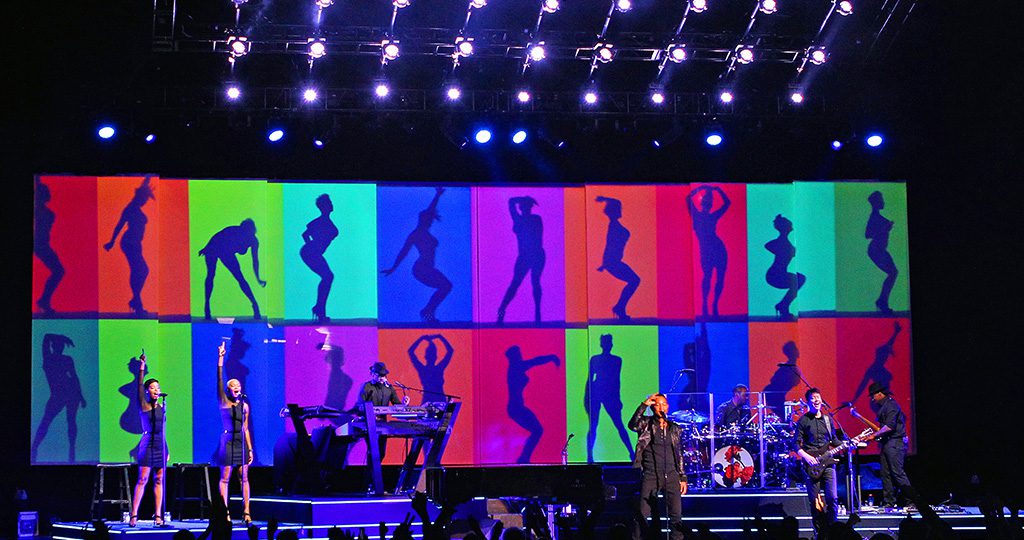
Does having this longtime association help in the design process? Do your creative meetings go more smoothly than they would if you were just starting out with Kid Rock?
“When we were young, we took a lot of chances, and I designed all kinds of wild sets and non-traditional light rigs. But over the last six years he’s mellowed. We don’t tour as much, so we want something more traditional that I can replicate on weekends or in casinos. He likes banks of lights. After 20 years, we concentrate more on changing the set on stage than the light rig these days. I move things around in the air once we decide on a set for the year. I do like a few new toys every year, but I can make most anything work when I have to.”
Does Kid Rock make suggestions about your shows? Is he well-versed in lighting?
“He knows every little hit and is sure to tell me any and everything he wants. He is in tune with all visual aspects of the show including the pyro and video parts. Whenever there is a new song, he will sit with me and tell me where he wants things accented, but after 20 years with an artist, they trust you know when to take the hits in the old songs.”
We know you believe in having a lot of faders at the ready. Why is that?
“I like to go off script at any time I feel necessary. Kid Rock does it and I need to be able to adapt and activate anything at any time. If I am on a tour, I will tend to put the base cues on a cue list, with many bump buttons. I encourage my operators to use these at their leisure. There are other times, especially for one-offs, when I just want to use one punt page, with a place for me to grab anything at any time and move it, change color, strobe or whatever I’d like. I recently had a festival with Chance the Rapper in Chicago. I was not familiar with the music like most of the guests. I cannot always follow a cue list if I do not know the music, but I can punt!”
When designing for a new client, how do you get started? Do you learn about the artist as well as the music? How do you come up with ideas for the theme of your shows?
“The new artists usually have some ideas of their own. Then I try and expand on their ideas. When nobody had ever heard of Imagine Dragons, they sent me a napkin with some trees sketched on it, holding some lamps. I sent them back beautiful renderings of similar trees I designed that could hold small moving lights. But then I added a small half moon scrim and a cheap projector — and they were off to do clubs.”
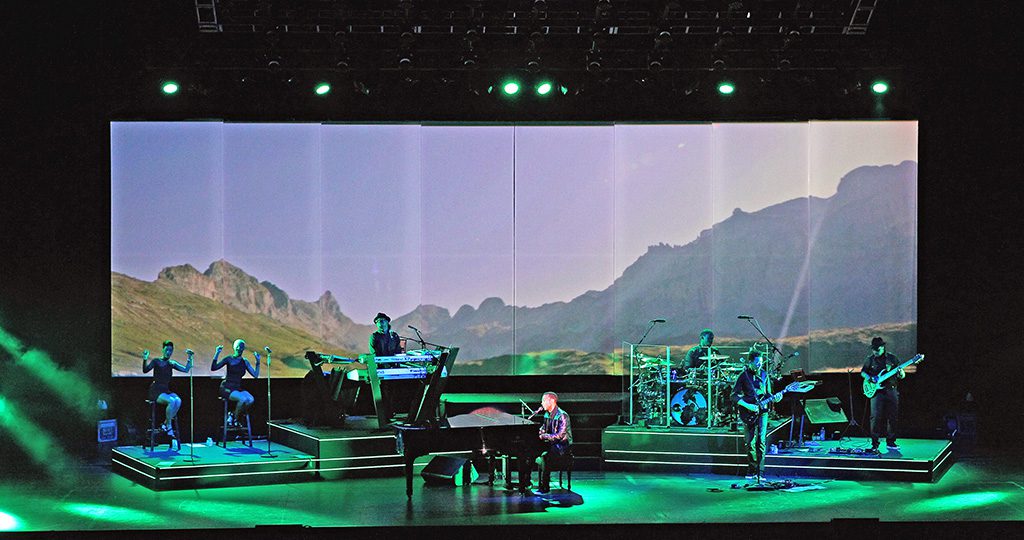
You’ve been in this industry for some time. It seems that in recent years, tour lighting designs have become more theatrical. They’re designed to be looked at, not just to light the performers on stage. How has this changed the way you approach design?
“I think that people like Howard Ungerleider have been designing light shows to be looked at for their entire careers. This is not so new. But with the advent of the LED fixtures and affordable small moving lights, we now see a way for productions to incorporate hundreds of lights into their looks and it doesn’t break the bank.”
You also do a lot of audience lighting? Why is this important? What advice do you have on audience lighting?
“It depends on the act. Some bands feed off of the fan’s energy. When they are rocking, they often want to engage the audience. I think the rules for audience lighting have changed. In some cases, the fans want to be part of the light show. I have seen Leroy Bennett and Chris Kuroda float almost as many lights over the audience as they do over the stage for certain acts and it is warranted. I have had other acts who actually ask me not to illuminate the crowd. They want the crowd’s eyes focused on the band and music, more than the spectacle of a show.”
What would you have done if you didn’t become a lighting designer?
“Play by play announcer or sportswriter for the NY Yankees.”
Do you still like to run your own boards? Why?
“I think every LD likes to run his own boards when they can, even if they don’t know how to program ‘em. When the lights go down and the crowd roars, the adrenaline kicks in. You get in a zone where you are at one with your lighting console. For two hours a night your desk becomes your lover. You massage its sides, talk to it, slowly slide faders around. Then in the heat of passion you slam and rock it like an animal in heat as 20,000 people erupt around you. The love between me and my grandMA is real.”
What is your favorite venue of all time? What makes a good venue from your perspective as an LD?
“There are two gigs that spring to mind when asked this question. They are both incredibly hard to load in, but once you get there and programmed, they are always magical.
Indoors would have to be the Royal Albert Hall for me. The other would be Red Rocks.”
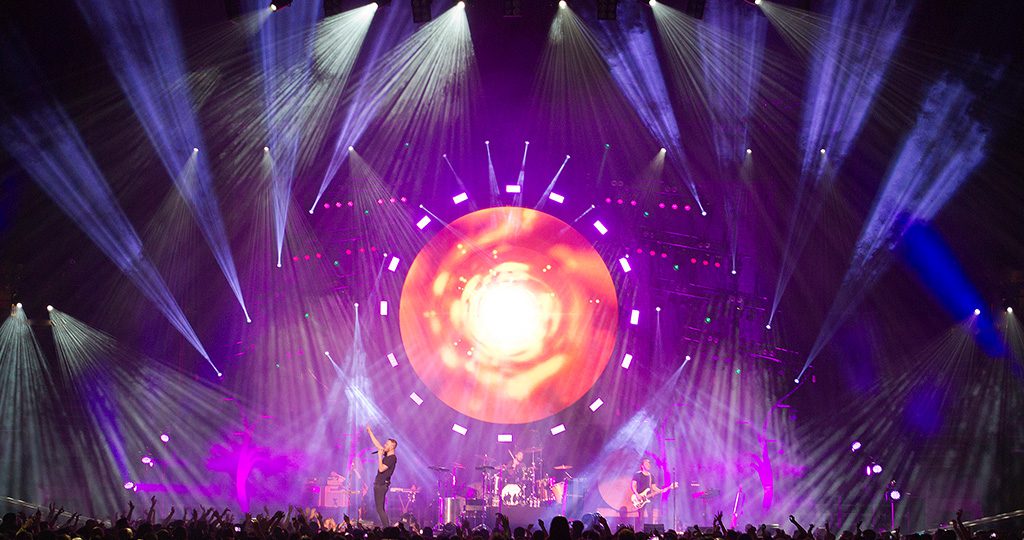
Aside from Kid Rock, what do you regard as the highlights of your career?
“I was quite fortunate to work with a lot of alternative acts over my career. That’s where my love lied. Best tours ever were the Talking Heads in ‘82-84. Carol Dodds was LD one year and Abbey Rosen the next. The Clash was fun. Working on Live Aid in Philadelphia in ‘85 was a big one. Running the lights for the Eagles Hell Freezes Over Tour was a good three-year run, though I yawned a lot, whereas the Beastie Boys was all free form and a blast to run every show. 311, No Doubt, Sugar Ray and Lenny Kravitz made the 90’s fun for me as a light guy. Classic Rock bored me and I was fortunate to avoid it for the most part of my career. In classic rock, you always know when the big look is coming. I felt like I could make my own rules lighting alternative rock.”
“I think one of the big reasons I liked lighting the alt rock bands was I got to use every function in every light at some point in the show. I hate repeating effects over, and with a lot of those bands you had a new cue every other second or three cues per second. You shook the gobos, used half colors, played with every effect and chase, just to have fresh looks. I miss those days in a way.”
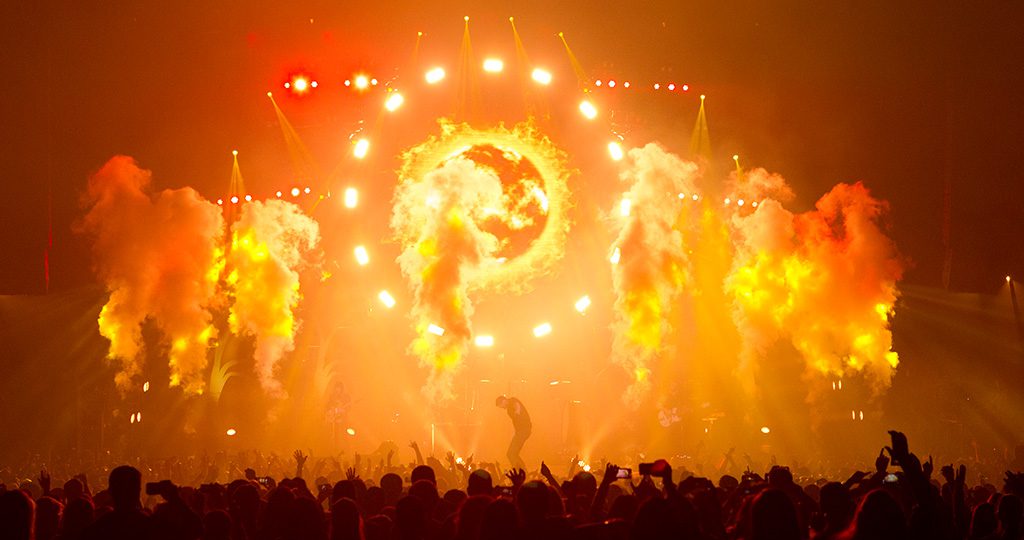
How did you get started in lighting, and who were the big influencers in your career?
“I went to school to become an audio engineer and complete a degree in English Lit. When I got out I ended up working at See Factor in NYC where they had more lights than audio. To stay employed, I learned lighting. I was in the right place at the right time when moving lights were invented. I transferred out of audio in the 80’s and started wiggling lights. People didn’t yell at me as much in lighting as they did in audio.”
Looking back in history, are there any famous artists that you wish were still around so you could light them?
“I always wondered what we could have gotten out of The Doors using today’s technology. I saw them at MSG when I was a kid and they were barely lit by some white light. But I was moved. I knew instantly that I just wanted to be one of those techs running wires around the stage.”
You’re also quite a good writer and the editor of PLSN. We know your experience in lighting helps you as a writer, but has your experience as a writer/editor helped you in lighting at all?
“Writing has opened up some doors for me. I can’t walk into any venue without someone introducing themselves to me. That’s because of my caricature and writing a column for ten years. Otherwise they wouldn’t recognize me from my lighting. The other plus is that I know every single new light fixture that hits the scene before anyone else. I see things in back rooms that many LDs are not privy to.”
What’s the one thing you would change about the lighting industry if you could?
“Give everyone a chance who wants to press buttons, to run a console. Whether it’s a fashion show or a club concert or programming a corporate event. For some it’s been a lifelong dream to get that opportunity. I’m glad I was able to help a few people fill that dream.”
We can’t let you go without asking, where does the name “Nook” come from?
“That story changes dependent on my alcohol intake on any particular evening. It’s rarely told and unflattering, so I just like to say that I grew up with two good friends also named Rick and I never fancied being like anyone else.”
How would you like to be remembered as a lighting designer?
“I don’t think I’m any great designer. I can fake it with the best of them, but I know so many way better than myself. What I would rather be remembered for is all the people I have taught throughout my whole career. The folks I gave that one break to. I’ve forgotten how many people I taught to run different consoles, but I feel confident it’s well into the hundreds by now.”
Any last words of wisdom for a youngster?
“I may not be the most popular person in the biz for saying this, but if you have the opportunity to further your education before taking on a position in the entertainment biz, do it. Go to college first if you can, then go conquer your dreams. Give yourself something to fall back on later in life. It certainly worked out for me.”
